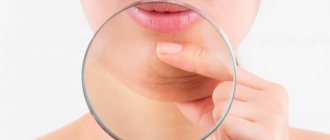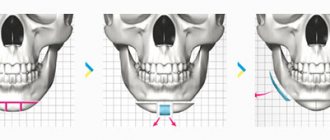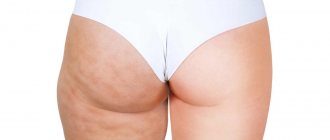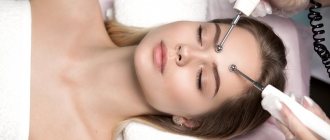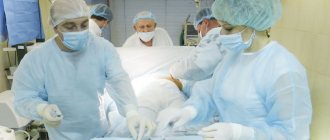Features of mentoplasty
The essence of the operation
Mentoplasty is often performed under local anesthesia, rarely under general anesthesia. The doctor removes fat through an external or internal incision or inserts an implant (gel), tightens the muscles and neatly lays the skin.
Benefits of mentoplasty
Compared to injection techniques, the effect of the operation is constant (except for the use of gel). The procedure helps to permanently get rid of a double chin, eliminates hollow cheeks, and promotes expressiveness of cheekbones.
Contraindications to mentoplasty
Age up to 18 years, due to bone growth and the formation of the facial skeleton, acute infectious diseases, blood clotting disorders, diabetes mellitus and chronic diseases in the acute stage, epilepsy.
How to perform mentoplasty with a rejuvenation effect?
Have you noticed that people with a lack of volume in the mental protuberance often look older? Even at 20 years old, their small chin cannot provide an ideal 90-degree chin-cervical angle. With age, the situation worsens and the face looks even more “swollen” and heavy.
Augmentation mentoplasty allows you to correct congenital disproportion and make the face (especially in profile) almost perfectly harmonious. At the same time, by increasing the size of the chin, we get a fairly noticeable skin tightening effect and a beautiful, clear line of the face oval. Mentoplasty is a harmonizing operation that allows you to make your face more beautiful and noticeably younger. For older people (when chin augmentation alone is no longer enough), we additionally perform a small lift. The combination of these techniques gives simply stunning results!
FAQ
Are the stitches visible after chin surgery?
No. With external access, a very small scar remains invisible to others. There is also a surgical method in which the doctor makes an internal incision on the inside of the lower lip.
How long is the recovery period?
On average, the duration of the rehabilitation period is 2-3 weeks. This period may vary depending on the volume of intervention and the individual characteristics of the body.
How long do implants last? Do they need to be changed?
Cartilage implants do not require replacement. Silicone implants typically have a lifetime shelf life, so they are also often used by plastic surgeons.
Is there a risk of implants shifting?
To prevent displacement of the implants, they are fixed using special sutures to the bone tissue; perforated material is also used, which minimizes the possibility of displacement.
Recommendations after mentoplasty
Wear a support bandageFor 1-2 weeks after mentoplasty, wear a fixation bandage that holds the tissue in the desired position. It is removed after complete healing of the tissue. | Avoid overheating and physical exertionDuring the rehabilitation period, it is not recommended to visit the gym, saunas and steam baths. Avoid physical activity, especially 1 week after surgery. |
Don't tense your lower jawTo avoid mixing of the implant or bones, as well as severe pain, the patient is recommended to avoid stress on the jaw during the first 2 weeks and eat only liquid and soft foods - purees, juices. | Ease your post-operative conditionDuring the first 3 days you may feel discomfort, to eliminate which apply a cold compress. To relieve pain, your doctor recommends painkillers. After mentoplasty, swelling is possible, which usually disappears within 7-10 days. A week after the operation, the sutures are removed, and you can start working in 3-4 days. |
All about chin surgery
The concept of “ideal profile” applies to people who have harmonious facial features. Harmony is created by the lines of the forehead, nose and chin. Do you want to get closer to the ideal of your appearance? Nothing is impossible! Plan changes and make them reality! You can start with chin plastic surgery, or mentoplasty.
Follow the example of many Hollywood stars and Russian show business. After all, it’s enough to remember that the brightest blonde of the 20th century, Marilyn Monroe, was “born” precisely thanks to mentoplasty. With this operation, the unknown Norma Jean Baker began to conquer the Hollywood Olympus.
Similar operations were also performed by Angelina Jolie and Gwyneth Paltrow, Beyoncé and Demi Moore.
In Russia, the most famous person who has undergone chin surgery is, of course, Ksenia Sobchak. In the past, a “blonde in chocolate”, and in the present, a politician and public figure, she, according to rumors, specifically took a vacation to spend time in a German clinic. As they say on the sidelines of the stars, mentoplasty cost Ksenia a tidy sum - about $10,000.
Mentoplasty – what is it?
Mentoplasty is a plastic surgery to correct the chin to change the position of the chin bone.
The ideal shape of the chin is considered to be 2-3 mm in front of the deep part of the back of the nose. The height of the mandible should not exceed 50% of the height of the lower third of the face. The correct width of the chin is the distance between the eyebrows or the wings of the nose.
For a more pronounced result, chin surgery is often combined with rhinoplasty and cheekbone correction.
The effect obtained from chin plastic surgery can be assessed after 4-6 months, when the swelling subsides and the bone structures and implants take their final shape.
The result of mentoplasty lasts throughout life. Correction may be required if endoprosthetics was performed using the patient’s own tissue, as well as if a mechanical injury occurred.
Kinds
Mentoplasty is performed to reduce, increase or correct the fatty tissue of the mandibular bone to correct the facial profile.
Chin augmentation This is a fairly common procedure, since the anomaly of underdevelopment of the lower jaw is more common. Shape correction is carried out in two ways:
- Osteotomy. A portion of the lower bone is resected and then brought forward by shifting the periosteum of the jaw and raising the bridges of the bone. In this position it is fixed with titanium plates. The resulting voids are filled with the patient's fat emulsion. As a rule, access to the operating area is through the mouth.
- Endoprosthetics. It is carried out through an external incision. The patient's cartilage tissue or special silicone material is used as an implant. Biological cartilage is not rejected, does not provoke an allergic reaction, but resolves after 3-4 years. Because of this, it is rarely used. The introduction of silicone monolithic or perforated products is more often practiced. They contribute to further filling of the voids with local adipose tissue. In addition, prostheses are lightweight, due to which they cannot be touched, felt, or noticed.
Manufacturers offer a variety of shapes and sizes. Mostly women install rounded implants with small side elements. Men prefer to install large products with elongated wings.
Chin reduction refers to the displacement of a protrusion of bone tissue or its dissection. This is done in two ways:
- Bone grinding. The mandibular angle is filed down to achieve symmetry, and then the shortened structure is held together with sutures.
- Jaw resection. The required part is removed and the bone is modeled to the desired size. Then sutures are placed with collagen threads. They move the resulting fragment back.
The choice of technique depends on the anatomical structure of the patient’s face.
Preparing for surgery
During the examination, the surgeon compares the three parts of the face, thereby determining the imbalance of the lower third in relation to the middle and upper part of the face. Then the doctor determines the type of operation and method of performing it, selects the type and shape of implants. Many specialists offer a 3D modeling service, in which the planned effect is visualized on a computer monitor.
It is imperative to consult with an anesthesiologist, dentist, or therapist. If there are bite pathologies or abnormalities in the development of the facial bones, then an examination by an oral and maxillofacial surgeon is also needed. Based on the results of a cephalometric study, a conclusion is given on checking the occlusion of the teeth. If the closure is incorrect, then surgical correction of the bite is performed.
To identify any contraindications, you need to take a full package of tests and undergo an examination:
- Urine and blood analysis.
- Analysis for hidden infections.
- Coagulogram.
- X-ray of the skull bones.
- Electrocardiogram.
- Fluorography.
After diagnosis, you should begin preparing the body:
- For three weeks, reduce your exposure to the sun and do not visit the solarium.
- For two weeks, stop taking hormonal, painkillers, homeopathic medications, contraceptives, vitamin E, blood thinners (Aspirin, Heparin, Cardiomagnyl, etc.). If discontinuation of the medication is not possible, the anesthesiologist must be notified.
- For a week, remove spicy, smoked, salty foods from your diet.
- For seven days, limit smoking and give up alcoholic beverages.
- For two days, treat the oral cavity three to five times a day with antiseptics for disinfection (applies if surgery is planned through internal access).
- For two days, carry out antibacterial washes of the face and neck several times a day (if surgery is planned through an external incision).
- Eat your last meal 8-9 hours before the event, choosing light food. Surgery is performed on an empty stomach.
On the day of the event, you cannot use care products, decorative cosmetics, or perfume.
Indications and contraindications
The main reason why patients turn to a plastic surgeon is dissatisfaction with the aesthetic appearance:
- Absence of an acute angle in the lower third of the face (a protruding chin distorts the proportions).
- Asymmetry due to bevel to one side.
- Protruding part of the middle part of the lower jaw (more than 5 mm).
- The presence of a double chin resulting from age-related ptosis.
- Dissatisfaction with the shape (square, high, narrow oval, split type).
- Deep hole.
However, there may be more indications for mentoplasty. For example, the medical reasons for performing an operation are as follows:
- Defects of the jaw bone, congenital or acquired.
- Asymmetry of facial features due to an excessively long chin.
- Asymmetry of facial features due to insufficient chin size. A shape that is too small enlarges the upper and middle third of the face.
- Correction of maxillofacial trauma. Fractures, improper fusion of bone tissue.
- Anomalies of the facial bone.
The following absolute contraindications may be the reason for refusing surgery:
- Age up to 21 years. Until this point, the lower jaw bone is still developing.
- Circulatory pathologies, including decreased coagulability.
- Decompensated diabetes mellitus.
- Epilepsy.
- Chronic diseases of the heart, blood vessels, kidneys and liver.
- Disturbances in the normal functioning of the thyroid gland.
In this case, it is worth considering alternative correction options - lipofilling and fat injections or liposuction.
It is necessary to postpone the procedure for some period of time if there are relative prohibitions:
- Infectious or viral processes.
- The presence of scratches, wounds and other skin damage in the correction area.
- Presence of seizures.
- Allergic reaction to anesthesia components.
- Dental diseases. Inflammation of periodontal tissues, for example.
Stages of chin plastic surgery
An external or internal incision is used to access bone structures. The external dissection takes place along the lower fold at the bottom of the tubercle, and the internal one - through access from the oral cavity. The choice of method remains with the surgeon.
Markings are applied to the face, along which the tissue is subsequently cut. The patient is given anesthesia.
Progress of chin reduction surgery:
- The periosteum is separated through an incision under the chin in a natural crease. At this stage it is important not to damage the facial nerve.
- The tip of the bone is sawed horizontally with an oscillating saw.
- Part of the bone is removed.
- The fragment is moving backwards.
- Fixed with a cerclage suture in a static position.
- Stitches are applied.
With reduction mentoplasty, the tissue is quite injured, so the operation is performed under general anesthesia. If there is a double chin, then excess fatty tissue, part of the cartilage and muscle tissue are removed.
Duration of surgical procedures: from half an hour to three hours.
Scheme of plastic surgery for chin augmentation using endoprostheses:
- From the side of the oral cavity, an incision is made on the mucous membrane between the lower lip and gum.
- The periosteum is separated along the edge of the lower jaw by excision of several layers of tissue.
- A bed for the implant is created, which is additionally disinfected
- The prosthesis is inserted and secured to the bone structure.
- Sutures are placed with threads that dissolve on their own.
The procedure takes from half an hour to one and a half hours.
Photos "before" and "after"
By comparing different photos, you can be sure that chin correction lengthens the neck and improves the proportions of facial features. Many surgeons practice a combination of mentoplasty with removal of Bisha's lumps. The face becomes narrower.
Before surgery, it is recommended to study the work of a photographic specialist. It is necessary to pay attention to the results obtained by patients.
After plastic surgery, the doctor shows the “before” photographs taken and asks to compare the result in frontal and lateral projections. The difference is dramatic: the profile is leveled, the face looks harmonious and symmetrical. The male profile becomes sharper.
Rehabilitation
The patient is under the supervision of medical personnel throughout the day. Bed rest and rest should be observed. Within 10 days, the lower half of the face becomes numb, and there is a feeling of tightness of the skin and muscles. This process is due to the presence of postoperative edema.
After surgery, a fixation bandage is attached to support the tissues in the desired position. It must be worn for at least two weeks.
The first five days there is pain, discomfort when talking and eating, and hardening of soft tissues. Painkillers and cold application may improve the condition. A course of antibiotic therapy reduces the likelihood of infection.
The procedure for removing sutures is carried out after seven days, after which you are allowed to begin work duties.
After another week, the severity of hematomas and bruises decreases. After the wounds have healed, after about a month, the stitches are practically invisible and do not leave rough scars.
Among the restrictions in the recovery period, the following should be highlighted:
- Eating hard foods that require prolonged chewing. It is necessary to eat only liquid and soft foods - purees, juices, cereals, cottage cheese. To reduce the movement of the maxillofacial bones, you should eat food through a straw. Chewing function returns to normal after 30 days.
- Sports activities. Physical activity and heavy lifting increase the speed of blood flow, which provokes the appearance of hematomas. Men need to avoid traumatic sports, such as boxing and any expected mechanical impact.
- Tilts down.
- Smoking. Nicotine reduces tissue healing because it thins the blood flow.
The prohibitions must be observed for about a month in order to minimize the load on the chin, reduce pain, prevent displacement of the implant and not cause complications.
The patient must comply with the following rehabilitation rules:
- Walk with your head raised.
- Keep your head upright while sleeping. You can sleep on two or three pillows in a semi-sitting position.
- Rinse your mouth several times a day with an antiseptic solution (with internal access).
- Treat surgical sutures with a solution of Chlorhexidine or Miramistin.
- Maintain facial calm. Do not smile, laugh, tense your lips, open your mouth too much, etc.
The recovery period takes about a month, but it increases if an osteotomy was performed.
Upon completion of rehabilitation, the preliminary result can be assessed. If there is a dent, it may be caused by incorrect selection of the implant, failure to follow the installation technique, or uneven redistribution of the fat emulsion. In addition, due to the individual characteristics of the body, a dimple may appear. This fact is not a complication.
Advantages of the Garant Clinic
No restrictions on types of surgeryDepending on the patient’s final goal, any existing chin plastic surgery technique can be used: augmentation (using a cartilage or silicone implant), reduction, contour mentoplasty and double chin correction. | Interdisciplinary approachThanks to the presence of a cosmetology department in the Garant network, you can speed up the process of skin restoration after mentoplasty. It is possible to perform a one-stage operation on the lower jaw by a maxillofacial surgeon at the Garant Medical Center. | Experienced plastic surgeonThe appointment is conducted by a plastic surgeon with 2 higher education degrees in the specialties “Plastic Surgery” and “Maxillofacial Surgery”. Participant of international conferences and symposiums on plastic surgery. Work experience 9 years. |
Why do I want to have mentoplasty!?
Augmentation mentoplasty or chin plastic surgery is performed to change the proportions and harmonize the face, but often this operation allows you to get other useful “bonuses”.
Mentoplasty is a very significant operation that instantly makes the face more beautiful, especially in profile.
- Ideal harmonious profile;
- Elimination of the “horse face” effect (chin reduction);
- Correction of a “sloping” chin (augmentation mentoplasty);
- Other pleasant “bonuses, from rejuvenation to... getting rid of snoring (J).
Anti-aging mentoplasty is a very interesting topic. Let's take a closer look at it.
Prices: cost of chin correction in Yekaterinburg. There is a loan and installments
Initial consultation with a plastic surgeon | |
| from 1,000 ₽ |
Consultation with an anesthesiologist | |
| from 1,000 ₽ |
Chin liposuction | |
| from 16,000 ₽ |
Chin reduction | |
| from 25,000 ₽ |
Chin augmentation | |
| from 25,000 ₽ |
Lower third face lift | |
| from 25,000 ₽ |
Platysmoplasty | |
| from 25,000 ₽ |
Rehabilitation after surgery with a cosmetologist | |
| from 1,000 ₽ |
